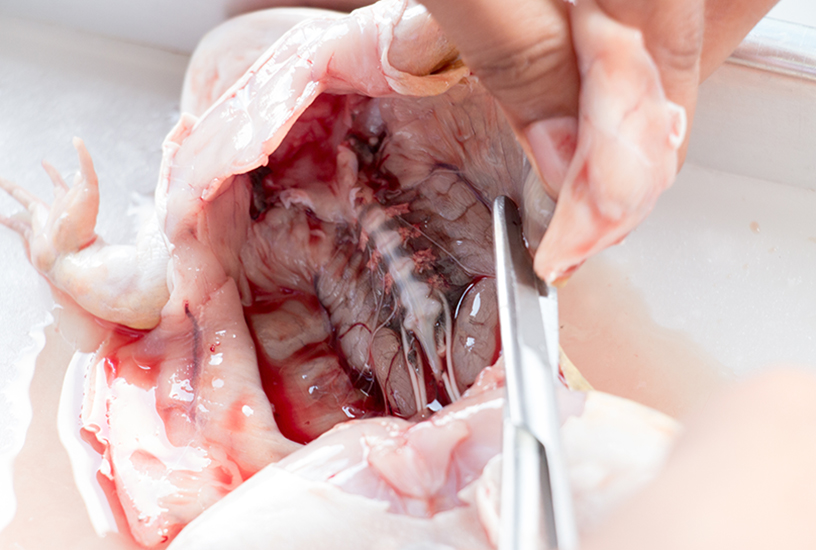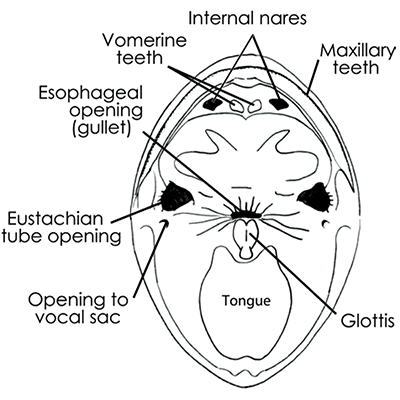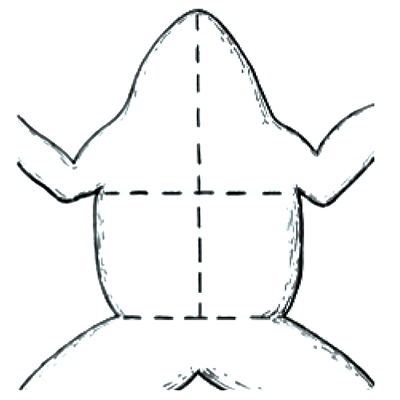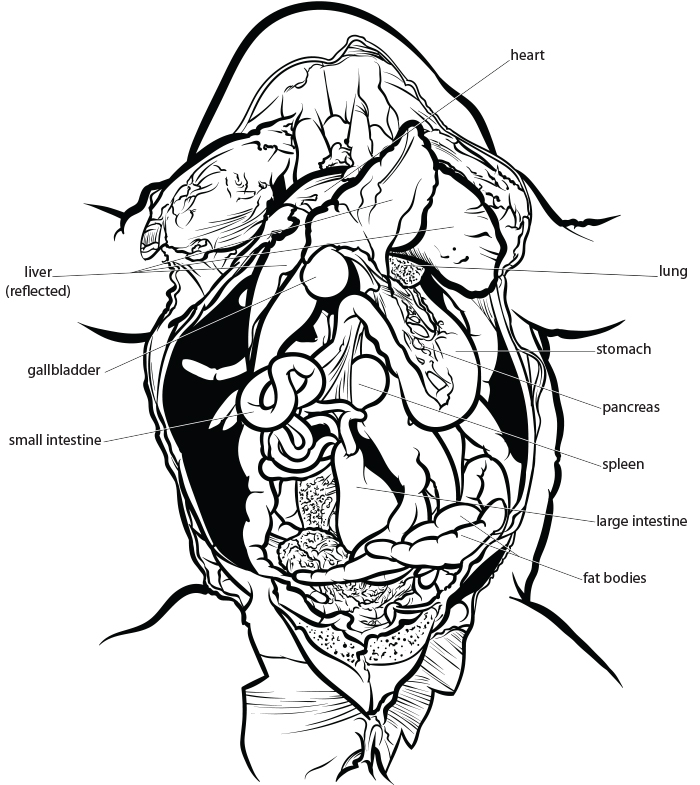Frog Dissection

AUSTRALIAN CURRICULUM ALIGNMENT
- Multicellular organisms have a hierarchical structural organisation of cells, tissues, organs and systems (ACSBL054)
- The specialised structure and function of tissues, organs and systems can be related to cell differentiation and cell specialisation (ACSBL055)
- In animals, the exchange of gases between the internal and external environments of the organism is facilitated by the structure and function of the respiratory system at cell and tissue levels (ACSBL056)
- In animals, the exchange of nutrients and wastes between the internal and external environments of the organism is facilitated by the structure and function of the cells and tissues of the digestive system (for example, villi structure and function), and the excretory system (for example, nephron structure and function) (ACSBL057)
- In animals, the transport of materials within the internal environment for exchange with cells is facilitated by the structure and function of the circulatory system at cell and tissue levels (for example, the structure and function of capillaries) (ACSBL058)
BACKGROUND
Frogs are vertebrates with specialised amphibian characteristics and behaviours. They provide a great model organism for a range of biological studies; including, evolution, behaviour, anatomy, and physiology. Dissection of preserved frogs is an established introductory activity into vertebrate anatomy and mature body systems. It provides insight into evolutionary adaptations, such as the transition from an aquatic life to life on land. Exploring the internal systems of frogs provides a tangible example of various anatomical structures and how they function. This practical requires only a few materials and takes a short time, yet provides students from a range of year levels with engaging, memorable lesson in anatomy.
PREPARATION - BY LAB TECHNICIAN
General Preparations- To prepare frog specimens, open the sealed bag with scissors, pour out any excess liquid and rinse the specimen with tap water. Pat dry with a paper towel if necessary. This should be done in a well-ventilated room and appropriate PPE should be worn.
- Provide each workstation with the following materials:
- Preserved Frog (Perfect Solution)
- Dissecting Pan
- Dissecting Pad
- Dissection Kit
- Concise Frog Dissection Guide
- Frog Dissection Mat
- Absorbent Mat
METHOD - STUDENT ACTIVITY
External Frog Anatomy
- Place the preserved frog on the dissecting tray with the dorsal surface facing up.
- Observe the frog appendages that have evolved to adapt to terrestrial life. The frog uses 4 limbs to travel and move, making it a tetrapod. You will see that each forelimb includes an upper arm, forearm, and hand. The frog’s hind limbs are divided into a thigh, lower leg, and foot.
- Looking at the head, identify the 2 external nares at the head’s tip. These function as a means of respiration.
- Find the round tympanic membranes that form the frog’s external sound receptors. You will find these on the back side of the eyes.
- Look closely at the eyes and attempt to find the frog’s third eyelid; this is the nictitating membrane that moistens and protects the eye. As the frog is deceased, this will appear as a cloudy eyelid attached at the bottom of the eye; however, it would appear clear in a living frog.
- Identify the cloaca, located at the specimen’s posterior end. The cloacal opening provides the function of exit for all urinary, reproductive, and digestive systems.
- Reposition the frog to lie on its dorsal side.
- Carefully cut the jaw joints on each side of the mouth to enable you to open the mouth wide.
- Locate the glottis (leads to the lungs) and oesophagus opening (leads to the stomach). See Figure 1.
- Conduct a dental analysis. You will find 2 sets of teeth. Firstly, locate the fine maxillary teeth lining the upper jaw. Secondly, locate the two prominent vomerine teeth located behind the mid-region of the upper jaw.
- On the sides of the roof of the frog’s mouth, you should see 2 openings; the eustachian tubes that lead to the tympanic membranes you identified earlier. The function of these tubes is to aid in pressure equalisation.

Figure 1: Glottis
Internal Frog Anatomy
-
Place the frog on the dissecting tray, ventral surface facing up.
- Using scissors, cut into the frog’s abdomen. To do this, pinch the skin at the frog’s stomach and make a small cut at the centre.
- Slice through the skin, keeping your cuts as straight and clean as possible. Follow the cutting pattern in Figure 2.
- Using the same pattern, Slice through the layers of muscle until you reveal the internal organs beneath.
- Locate the frog’s liver in the abdomen body cavity; it will be comparatively large in size and brown. The largest internal organ, the liver consists of 3 lobes.
- Reposition the liver lobes to reveal gallbladder beneath. The gallbladder, which stores bile, will appear significantly smaller and greenish.
- Following your dissection guide and Figure 3, identify the following internal structures:
- Stomach
- Small intestine
- Large intestine
- Spleen
- Heart
- Lungs
- Fat Bodies

Figure 2: Frog Dissection Guide

Figure 3: Illustration of Frog Internal Organs
 Time Requirements
Time Requirements
- 45 mins
 Material List
Material List
 Safety Requirements
Safety Requirements
- Wear appropriate personal protective equipment (PPE).
- Know and follow all regulatory guidelines for the disposal of laboratory wastes.
- Handle scalpel with care as it has the potential to cause serious injury.
- Sterilise work surfaces before and after the practical.
- Do not conduct this dissection in areas of food prep or consumption.
